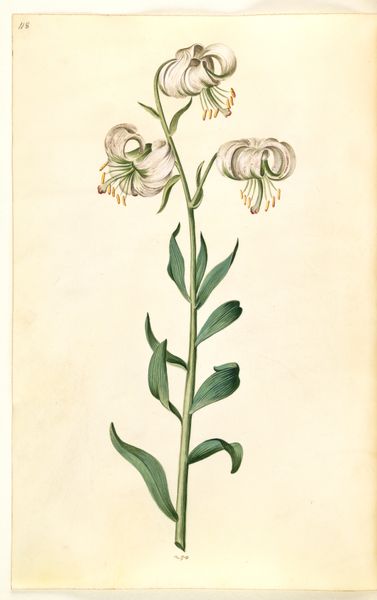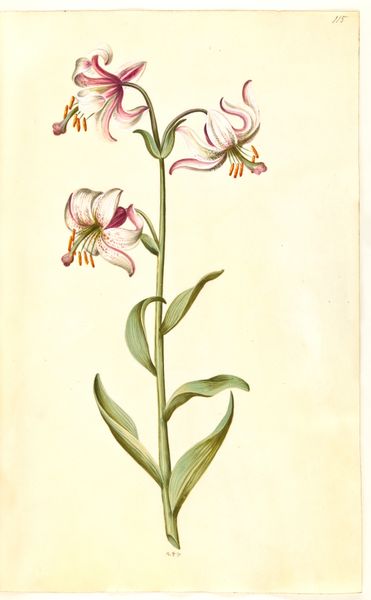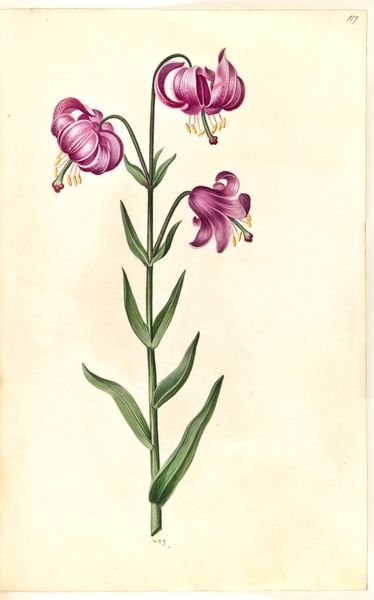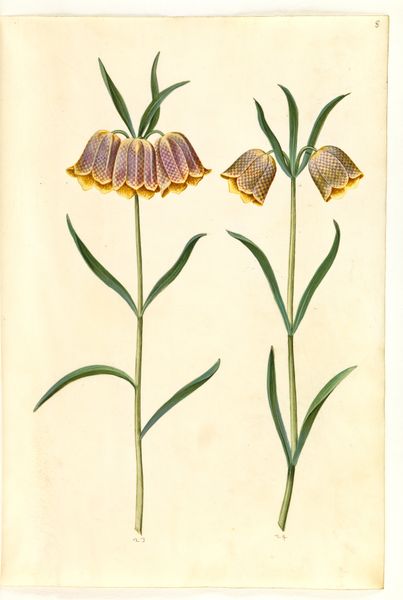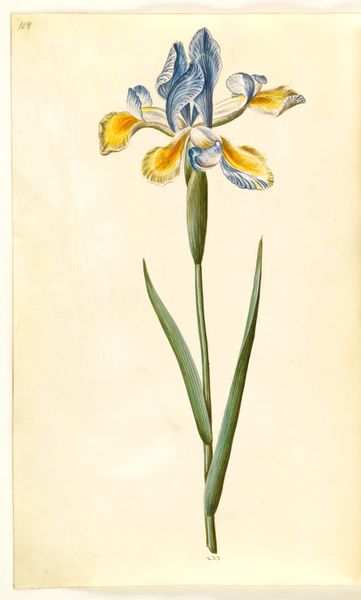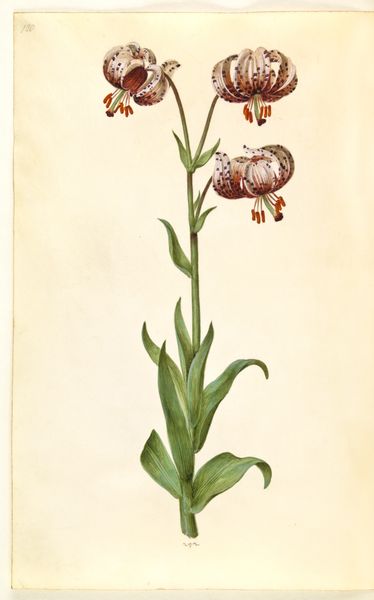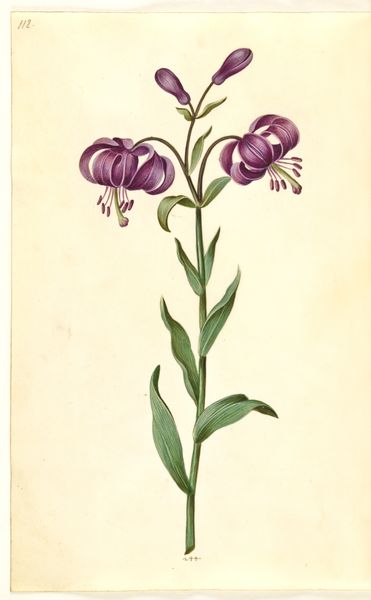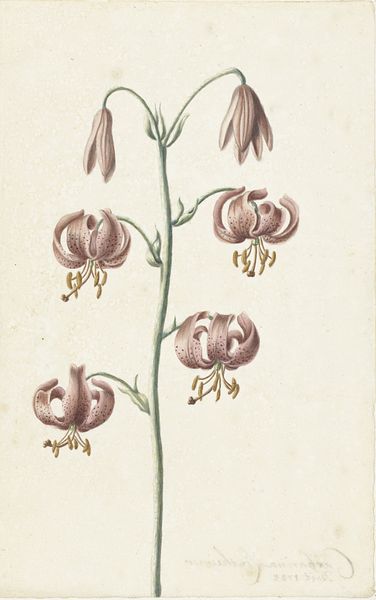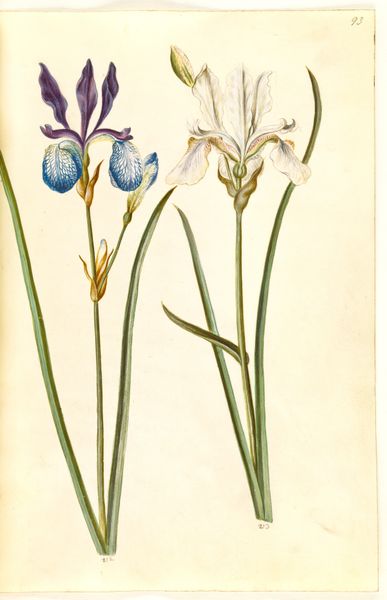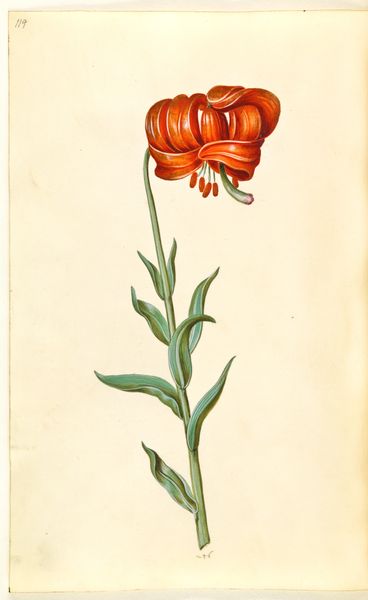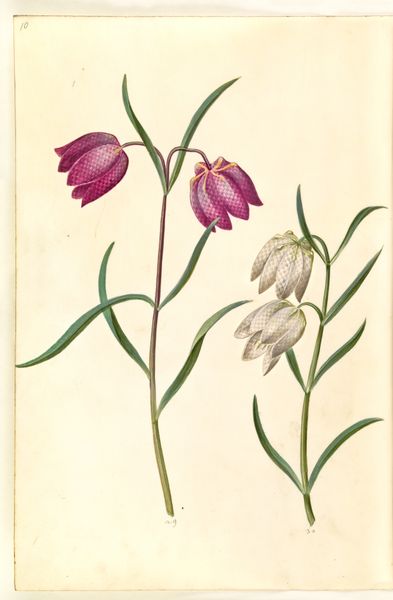
drawing, gouache, watercolor
#
drawing
#
gouache
#
botanical illustration
#
watercolor
#
botanical drawing
#
watercolour illustration
#
botanical art
#
watercolor
Dimensions: 375 mm (height) x 265 mm (width) x 85 mm (depth) (monteringsmaal), 358 mm (height) x 250 mm (width) (bladmaal)
Editor: This beautiful botanical illustration, "Lilium martagon," or krans-lilje, was created by Hans Simon Holtzbecker sometime between 1635 and 1664 using watercolor and gouache. It has a certain delicate quality that feels both scientific and artistic to me. What catches your eye about this piece? Curator: Well, what immediately strikes me is its creation period. During the 17th century, botanical illustrations like this were often commissioned for scientific documentation, aligning with the rise of natural history and exploration. How do you think the political and social climate of the time influenced its style and purpose? Editor: That’s interesting! I hadn't really considered the social impact on botanical art, I just considered its simple subject. I guess these weren’t just pretty pictures for enjoyment. Curator: Exactly! Courts of the era patronized botanical studies. Art academies were starting, but not yet at their peak. Art collecting served diplomatic purposes, influencing the production and consumption of these illustrations, which functioned almost as diplomatic gifts reflecting trade and imperial power. Considering that context, what do you make of the single, perfect specimen isolated against this plain background? Editor: Hmmm…It emphasizes its unique and precious nature perhaps, like it’s something rare and worth showcasing. Almost like a portrait of nobility! I am starting to wonder how public this type of artwork might have been at the time of creation, considering the painstaking details used. Curator: An astute observation. These works were generally created for a restricted audience: scientists, botanists, and wealthy patrons. Reflect on its current home in the Statens Museum for Kunst, in Denmark – does that affect how we view this drawing today? Editor: It does make it accessible now to everyone, stripping its exclusivity and making it part of our shared cultural knowledge and heritage. So much context to unpack from just a flower! Curator: Precisely. By understanding the artwork's historical journey, its function, its original audience, and even its current location within the museum, we deepen our appreciation for this delicate drawing and how it relates to a broader social narrative.
Comments
No comments
Be the first to comment and join the conversation on the ultimate creative platform.
